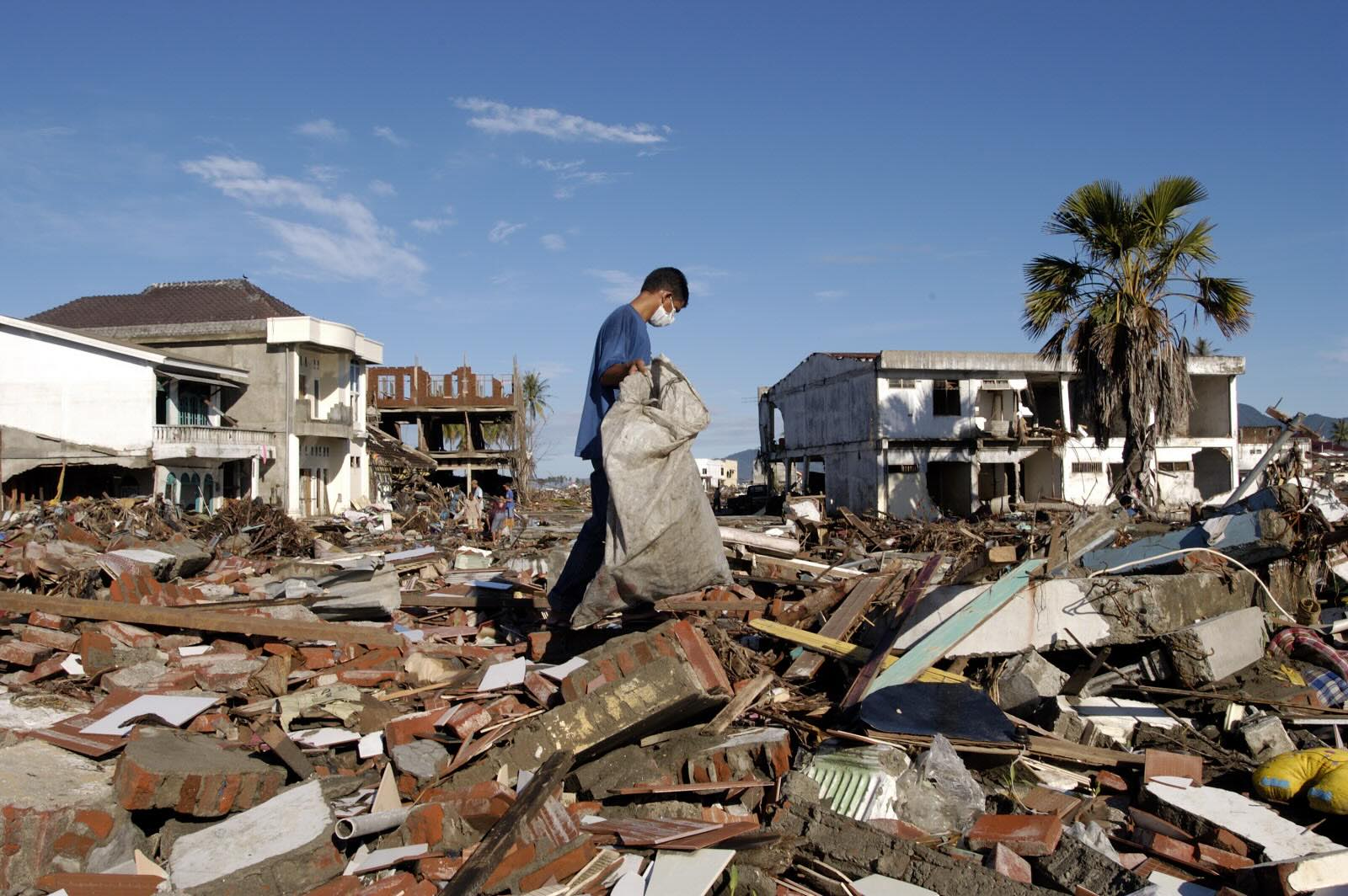
The Indian Ocean tsunami of 2004 remains one of the most devastating natural disasters in recent history. Triggered by a massive undersea earthquake off the coast of Sumatra, this catastrophic event claimed over 230,000 lives across 14 countries. But what exactly caused such widespread destruction? The earthquake, measuring a staggering 9.1 on the Richter scale, unleashed powerful waves that traveled at speeds up to 500 miles per hour. These waves, known as tsunamis, can cause immense damage when they hit coastal areas. Understanding the impact and aftermath of this disaster is crucial for preparedness and resilience in the face of future tsunamis. Let's dive into 27 compelling facts about the Indian Ocean tsunami that highlight its scale, impact, and the lessons learned.
The Indian Ocean Tsunami: A Catastrophic Event
The Indian Ocean tsunami of 2004 was one of the deadliest natural disasters in history. It left a lasting impact on the world, reshaping communities and altering lives forever. Here are some compelling facts about this tragic event.
-
The Date: The tsunami struck on December 26, 2004, the day after Christmas, catching many people off guard during holiday celebrations.
-
Epicenter Location: The earthquake that triggered the tsunami had its epicenter off the west coast of northern Sumatra, Indonesia.
-
Magnitude: This earthquake was a massive 9.1 to 9.3 on the Richter scale, making it one of the strongest earthquakes ever recorded.
-
Duration: The earthquake lasted between 8 to 10 minutes, an unusually long duration for such a powerful quake.
-
Affected Countries: The tsunami impacted 14 countries, including Indonesia, Thailand, India, Sri Lanka, and even reached as far as the eastern coast of Africa.
The Human Toll
The human cost of the Indian Ocean tsunami was staggering. Lives were lost, families were torn apart, and communities were devastated.
-
Death Toll: Approximately 230,000 to 280,000 people lost their lives due to the tsunami.
-
Missing Persons: Thousands of people were reported missing and never found, adding to the tragedy's emotional toll.
-
Injuries: Millions were injured, with many suffering from severe wounds and long-term disabilities.
-
Displacement: Over 1.7 million people were displaced, losing their homes and livelihoods.
-
Children: A significant number of the victims were children, who were particularly vulnerable during the disaster.
Environmental Impact
The tsunami not only affected human lives but also had a profound impact on the environment.
-
Coastal Erosion: The powerful waves caused severe coastal erosion, reshaping shorelines and destroying habitats.
-
Marine Life: Marine ecosystems were disrupted, with many species of fish and coral reefs suffering extensive damage.
-
Soil Salinization: Saltwater inundation led to soil salinization, making agricultural land unusable for years.
-
Mangroves: Mangrove forests, which act as natural barriers against storms, were heavily damaged, reducing their protective capabilities.
Economic Consequences
The economic fallout from the tsunami was immense, affecting various sectors and hindering recovery efforts.
-
Tourism: Many affected regions relied heavily on tourism, which suffered a significant decline in the aftermath.
-
Fishing Industry: The fishing industry, a primary livelihood for many coastal communities, was devastated by the destruction of boats and infrastructure.
-
Infrastructure Damage: Roads, bridges, and buildings were destroyed, complicating relief and recovery efforts.
-
Reconstruction Costs: The cost of rebuilding affected areas ran into billions of dollars, straining national and international resources.
Global Response
The international community responded swiftly to the disaster, providing aid and support to the affected regions.
-
Humanitarian Aid: Countries around the world pledged billions in humanitarian aid to assist with immediate relief and long-term recovery.
-
NGO Involvement: Numerous non-governmental organizations (NGOs) played a crucial role in providing on-the-ground support and resources.
-
Military Assistance: Several countries deployed military forces to assist with search and rescue operations and deliver aid.
-
Medical Support: Medical teams from around the world provided essential healthcare services to the injured and sick.
Lessons Learned
The Indian Ocean tsunami highlighted the need for better preparedness and early warning systems to mitigate future disasters.
-
Early Warning Systems: In response to the tsunami, efforts were made to establish early warning systems in the Indian Ocean region.
-
Disaster Preparedness: The disaster underscored the importance of disaster preparedness and education for vulnerable communities.
-
International Cooperation: The event demonstrated the necessity of international cooperation in disaster response and recovery.
-
Building Codes: Improved building codes and construction practices were implemented to reduce the impact of future tsunamis.
-
Environmental Conservation: The importance of conserving natural barriers like mangroves and coral reefs was recognized as a key factor in mitigating tsunami damage.
Reflecting on the Indian Ocean Tsunami
The Indian Ocean tsunami of 2004 remains one of the most devastating natural disasters in recent history. With waves reaching up to 100 feet, it affected 14 countries and claimed over 230,000 lives. The sheer power of the tsunami was a stark reminder of nature's unpredictability. It also highlighted the importance of early warning systems, which have since been improved to prevent such a high loss of life in the future. The global response showcased humanity's resilience and compassion, with aid pouring in from all corners of the world. Survivors' stories continue to inspire, reminding us of the strength of the human spirit. As we remember this tragic event, it's crucial to stay informed and prepared for natural disasters. Understanding the past helps us build a safer future.
Was this page helpful?
Our commitment to delivering trustworthy and engaging content is at the heart of what we do. Each fact on our site is contributed by real users like you, bringing a wealth of diverse insights and information. To ensure the highest standards of accuracy and reliability, our dedicated editors meticulously review each submission. This process guarantees that the facts we share are not only fascinating but also credible. Trust in our commitment to quality and authenticity as you explore and learn with us.
